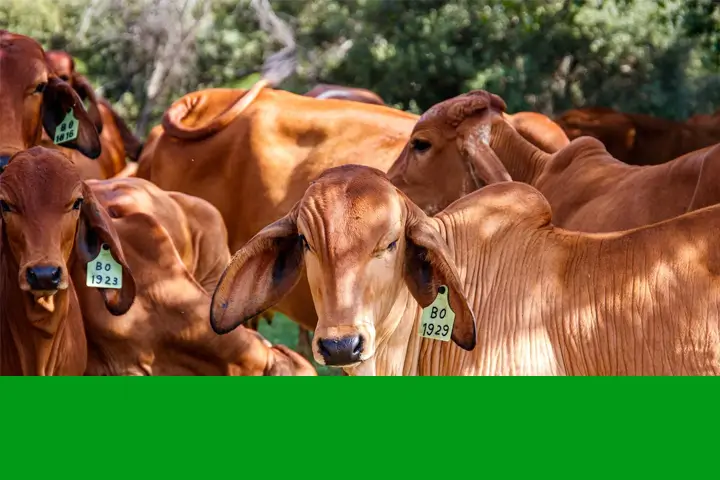
In the intricate tapestry of farming, an often underestimated adversary lurks – plant poisoning. As nature awakens during the spring months, and the rhythm of rainfall commences its dance, the specter of plant poisoning emerges, claiming the lives of livestock in its wake. This informative guide unveils the insidious nature of plant poisoning, especially prevalent during periods of climatic transition or on parched soils. Delving into the intricacies of plant toxins, we explore the levels of toxicity, factors that influence their effects, and the critical importance of understanding these nuances to protect precious livestock.
Understanding the Depths of Plant Poisoning
The world of plant poisoning is both fascinating and treacherous, encompassing a spectrum of toxicities that vary in their intensity and impact. Broadly categorized into two groups – highly toxic and less toxic plants – the dangers they pose are both swift and gradual. Picture Dichapetalum cymosum, infamously known as “Poison leaf,” a plant of extraordinary toxicity that wields fatal effects even in minuscule quantities. On the other hand, Geigeria ornativa, commonly referred to as “Vermeerbos,” manifests its harmful effects through gradual accumulation, resulting in toxicity only after prolonged ingestion.
Intriguingly, the potency of these toxic plants is influenced by a myriad of factors. Soil composition, climate, growth stage, and even plant moisture content intricately shape their lethal potential. Consider the captivating Tribulus terrestris, cherished for its forage value, yet capable of turning poisonous in its wilting stage. A seemingly innocuous grazing area can transform into a perilous terrain for livestock during periods of scarcity, where temptation trumps discernment.
The Telltale Signs: Effects of Plant Poisoning
The effects of plant poisoning are as diverse as the African landscapes they inhabit. Imagine livestock grappling with heart ailments, nervous disorders, digestive turmoil, liver damage, and even skeletal and skin issues. Equally alarming are instances where poisonous plants taint meat and milk, sowing the seeds of a broader ecological crisis. Heart-rending scenes of animals succumbing to these dangers underscore the urgency of embracing preventive measures.
However, the tale does not end there. Even the most beneficial forage plants can turn adversaries under specific circumstances. Tribulus terrestris, which nourishes in its green splendor, transforms into a toxic menace as it wilts. Grasses like Cynodon dactylon and Panicum maximum, cherished staples, reveal their darker side when consumed in excess or at particular growth stages.
Empowering Farmers: Mitigating Risks and Taking Action
The journey toward safeguarding livestock from plant poisoning is characterized by vigilance and strategic actions:
Holistic Grazing Management: Envision pastures meticulously managed, with areas prone to toxic plants identified and cordoned off. Overgrazing and grazing in these regions during critical periods can be avoided, preserving the health of livestock.
Water Abstinence: Visualize animals refraining from water for a crucial 48 hours post-suspected poisoning. This strategic withholding minimizes poison circulation, providing valuable time for intervention.
Effective Remedies: Picture remedies like “Hypo” and charcoal ready at hand. Hypo, a crystal-like substance, can be dissolved in water and offered to animals as they return from grazing. Activated charcoal or common fire charcoal can also be administered to neutralize toxins.
Knowledge is the Key: Imagine farmers armed with knowledge, recognizing the invaluable plants and the lurking dangers. Guidebooks like “Toxic Plants of Veterinary Importance in Namibia” and “Grasses of Namibia” become invaluable allies in this pursuit.
Conclusion: Nurturing a Safer Tomorrow
In the realm of agriculture, knowledge empowers, and awareness protects. As you traverse the landscapes of plant poisoning, remember that informed action is the antidote to its peril. While the threat is real, so are the measures to combat it. By understanding the intricacies of toxic plants, embracing preventive strategies, and arming oneself with remedies, the harmony between livestock and land can be restored.
Picture a future where the rhythmic pulse of livestock coexists harmoniously with the heartbeat of the land. It is a world where livestock grazes without fear, farmers tend to their fields with knowledge, and the vitality of Africa’s agricultural bounty flourishes untamed. In this endeavor, knowledge truly emerges as the shield, and vigilance the sword, against the enigma of plant poisoning.
The Original Article was written by Erastus Ngaruka for The Brief
Stay updated with the latest farming tips and agriculture industry news from Africa by subscribing to our newsletter. Don’t miss out on valuable insights and updates. Follow us on Twitter, LinkedIn, and Facebook to join our farming community and stay connected with us.



















